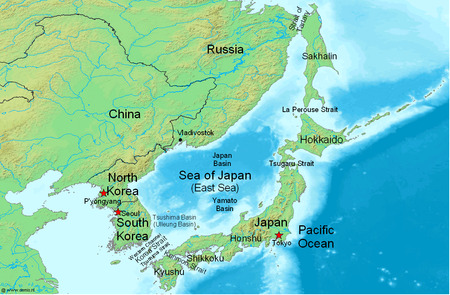Colonization of Korea
The Japanese colonization of Korea was an important period in both Korean and Japanese history. The following historical events led to many Korean families having to assimilate and isolate from their culture, leading to generational trauma. Koreans were oppressed and had many of their social and economic rights taken away through these events, which is the root of some of their trauma. Colonization began in 1910 and lasted until the end of World War II in 1945. Japan's interest in Korea grew during the late 19th and early 20th centuries due to Korea's attractive location and its resources. Korea had also been a powerful neighboring state of China for centuries but faced increasing pressure from Japan and other imperial powers.
As mentioned in our Neatline group project, prior to Japan annexing Korea, a few agreements between Japan and Korea were made. These argeements "gradually seized control of diplomatic, financial, and internal affairs, implementing a series of treaties to "legalize" these encroachments on Korean sovereignty (Moon 28). This entire process was framed by Japan as an "improvement of governance." This was particularly hard for the Koreans. Koreans thought that their country was "superior to Japan in terms of civilization. When Japan established colonial rule through military force, Koreans found it more than difficult to accept" (Chinoh 91).
Japan also implemented various policies to assimilate Korea into Japanese culture and society, such as by surpressing Korean language and culture and forced labor. Japan also invested heavily in Korea's infrastructure and industry, primarily for its own benefit. The Japanese authorities attempted to erase Korean culture, including banning Korean language and traditional practices, and forcing Koreans to adopt Japanese names. This is the root and start of generational trauma being passed down.
"The Japanese word "Zainichi" is itself controversial because it literally means "existing in Japan" (Bigman 4). It is commonly used to refer to ethnic Koreans in Japan, specifically those whose families have lived in Japan for several generations but retain Korean nationality. The relationships Zainichi had with Japanese people and the way they were treated was complicated. For example, Solomon, who is Japanese born, is "forced to register for his alien registration card on his fourteenth birthday. If denied, he stands to be deported to a country he's never lived in" (Bigman 4). Every three years, he must request permission to stay in Japan. "This birthday scene comes after Solomon has been fingerprinted like a criminal; he has attempted to wash the ink off, but "a shadow of the stain remained on his fingertips" (Bigman 4). The Korean characters in Pachinko are aware of this discrimination. "In the eyes of many of Pachinkos Japanese characters, Koreans--even "good Koreans"--are a stained race "(Bigman 4). While Solomon was well educated, he still had a hard time figuring out his identity. This point is a prime example of the "danger of a single story." The fact that Koreans in Japan were always viewed as the "stained race" is one of the main reasons why Koreans had such a hard time gaining acceptance, reflecting in many of the character's experiences, such as Noa.

